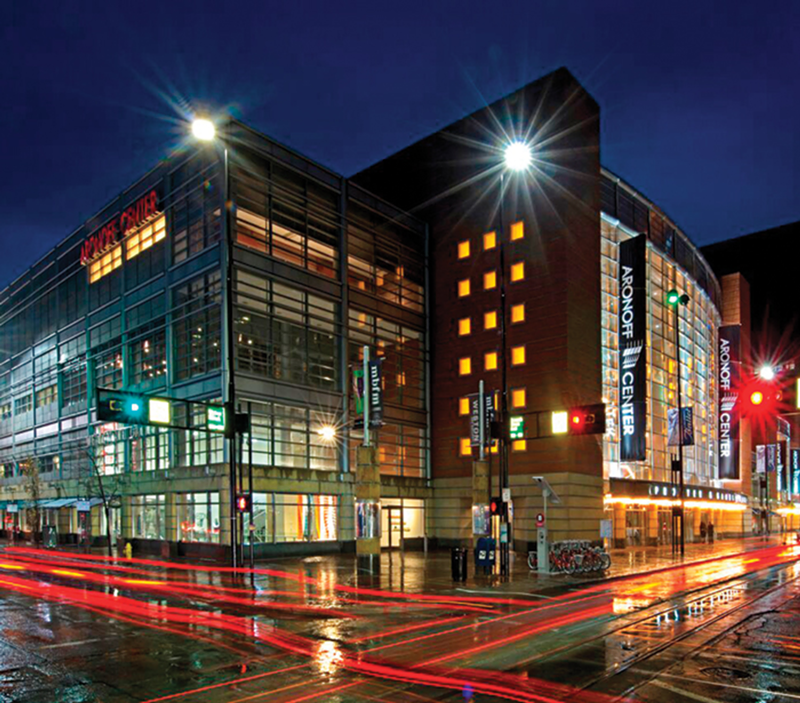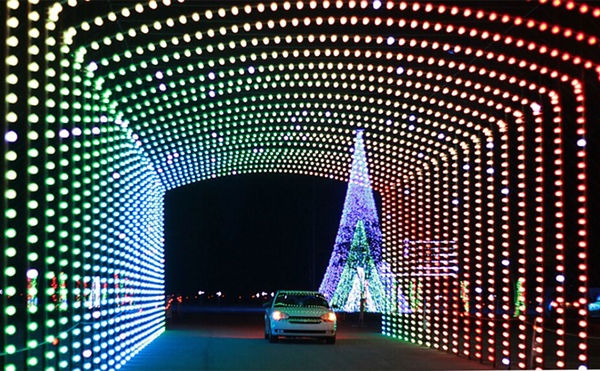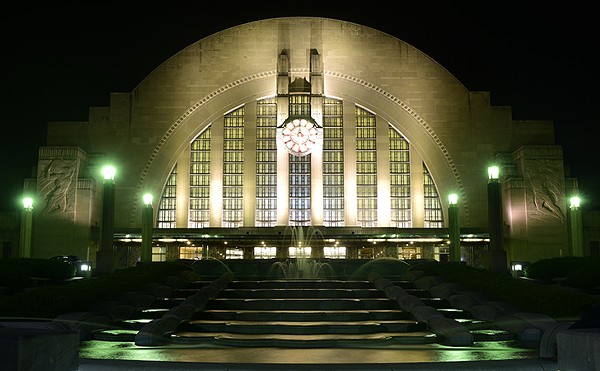As the Aronoff Center for the Arts marks its 20th anniversary on Oct. 21, it’s generally known as the place to be for major performances by Broadway touring shows, lectures, comedians, musical acts and more. But back in the early 1990s, it was a controversial project.
In 1993, in fact, a debate raged about whether it should be built at all. The biggest concern was whether a new performance hall would spell the demise of Music Hall. Even then, the historic 1878 home of the Cincinnati Symphony Orchestra, Cincinnati Opera and Cincinnati Ballet had a questionable future, anchored in the Over-the-Rhine neighborhood deep in the throes of crime and poverty, and there was little hope that things could change. Many community leaders believed that a downtown performance venue would mean the wrecking ball for the OTR icon.
The controversy was so overheated that it resulted in a ballot issue aimed at derailing the project proposed to be the heart of a “downtown entertainment district.” At the time, Walnut Street was a run-down home to some small businesses and restaurants, and many scorned the notion that the arts center would spark development.
Downtown was not an attractive destination in the early 1990s. More than a decade earlier, several downtown movie palaces — the Albee and the Shubert — converted to performance venues had been demolished. The Taft Theatre on Fifth Street remained and was the place where Broadway touring shows were presented, but its 65-year-old stage was outdated; without air-conditioning, it could not be used during Cincinnati’s steamy summers.
The Cincinnati Arts Association (CAA) was established to manage Music Hall and the new venue. Doing this in tandem, it was argued, would mean both would be utilized productively. Funding for the project was secured from the State of Ohio by then-Senate President Stanley Aronoff, a venerable Cincinnati politician. The ballot issue failed, demolition of the Walnut Street block between Sixth and Seventh streets proceeded and construction was underway. Leaders decided the building should be named in Aronoff’s honor, and it opened in October 1995.
Twenty years later, people don’t much recall the kerfuffle. The Aronoff has been a success and a catalyst for restaurants, hotels and other attractions. The Contemporary Arts Center moved to the neighborhood in 2003. Since CAA operates both the Aronoff and Music Hall, Cincinnati Ballet can use both venues. When Music Hall undergoes renovation in 2016-2017, the Aronoff will temporarily host two Cincinnati Opera summer seasons. (The Cincinnati Symphony will perform at the upgraded Taft, which it now manages, during that stretch.)
What does success look like? The popular Broadway in Cincinnati series of touring musical theater productions has the second-largest subscription base in the country, out of 35 markets. When the series moved from the Taft to the Aronoff’s 2,700-seat Procter & Gamble Hall, it expanded from one- to two-week engagements. The Lion King holds the record for having the most performances (147), but Phantom of the Opera is close behind (144), with Wicked in third place (104). Those numbers, by the way, mean big business for nearby restaurants and bars, where audiences stop in before and after shows.
In addition to the touring Broadway musicals, the Aronoff has been a venue for entertainers ranging from Jerry Seinfeld to Tony Bennett, from The Temptations and the Four Tops to Ladysmith Black Mambazo. It’s also hosted lecture series featuring the likes of Coretta Scott King and Margaret Thatcher, special events like the Cappies Awards for high school theater kids and big public programs like TEDx events.
With 437 seats, the Jarson-Kaplan Theater
— shorthanded as the “J-K” — is home to several organizations, including Cincinnati Music Theatre, one of the city’s oldest and most successful community theaters. In fact, the first full-scale show in the J-K was CMT’s fall 1995 production of Stephen Sondheim’s Sweeney Todd. For 20 years, the company has used the facility twice annually to present large-scale musicals.
Dance performances happen most often in the J-K. Contemporary Dance Theater annually presents four weekends of internationally recognized guest artists such as the Bill T. Jones/Arnie Zane Dance Company (January 2016) and Pilobolus (April 2016). The J-K is also home to two resident companies — Exhale Dance Tribe, a contemporary jazz dance company, and MamLuft&Co. Dance, an eight-year-old modern dance company.
Cincinnati Playwrights Initiative has monthly readings of new scripts by local writers in the Fifth Third Bank Theater, a 150-seat black box. It’s also rehearsal space for the Cincinnati Boychoir, which has its offices in the Aronoff and presents concerts in both the big hall and the J-K.
Visual arts are part of the mix, too, with exhibitions in the Weston Art Gallery, which has hosted close to 1,000 local and regional artists. It has two levels, one visible at the corner of Walnut and Seventh streets and more spaces below street level. The highly respected gallery makes the Aronoff a “center for the arts,” rather than a performing arts center.
The building itself is a visual highpoint in downtown Cincinnati, with a striking design by architect César Pelli. Next time you visit, check out the marble floor (imported from Italy, France, Spain and Guatemala) in the lobby running the length of the building; notice how its pattern connects to the surrounding plazas and sidewalks.
After 20 years, the Aronoff still looks pretty good, even though many elements are beyond their projected lifespan of 10-15 years. Improvements have been made in the building’s infrastructure, and plans are under way to replace, section by section, the seat cushions and coverings in the Procter & Gamble Hall, which are showing their age.
That wear and tear is actually the most tangible evidence of the Aronoff’s success. It has become the attraction that was envisioned 20 years ago, bringing life and vitality to downtown Cincinnati.
For more information about the ARONOFF CENTER, visit cincinnatiarts.org.







